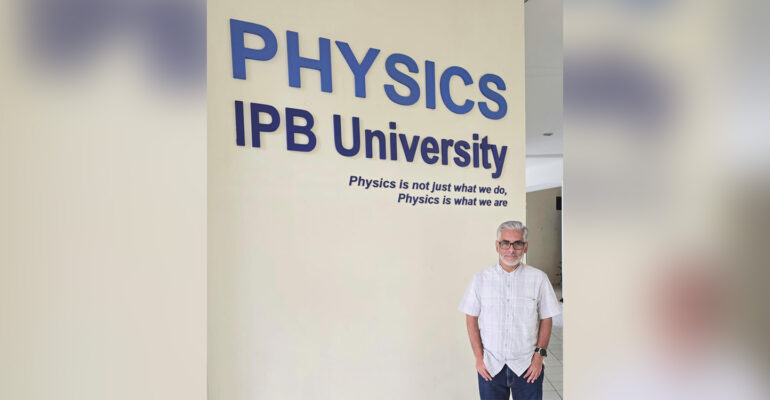IPB University Theoretical Physics Expert Explains the Science Behind Ramadan Twice in 2030

Have you ever imagined Ramadan occurring twice in a single year? According to the calendar, this unique phenomenon will happen in 2030. What is the scientific explanation for this event, particularly from a physics perspective?
A Theoretical Physics Expert at IPB University, Professor Husin Alatas explains, for physics, the magnitude of time is a mystery that has yet to be adequately explained, and is unlikely to ever be.
“However, for humans, time is something that is felt every day, which is felt through the presence of changes in all aspects of life. Including changes related to certain natural phenomena,” he said.
How is time measured?
Prof Husin explained, to mark and measure the amount of time, scientists often use periodic phenomena in nature.
“Currently, the most accurate timekeeping devices are optical lattice clocks which utilize optical frequency transitions in atoms like Ytterbium (Yb), Strontium (Sr), or Aluminum (Al).” he said
“The accurate determination of time units utilizes the fluctuating pattern of electron energy levels in these atoms which are very stable,” said the lecturer of the Lagrange-Hamilton Mechanics course at the Physics Department of IPB University.
Traditionally, time measurement has relied on periodic natural phenomena, such as the apparent movement of the sun.
The Earth’s rotation serves as the basis for daily timekeeping. While its revolution around the sun results in the apparent solar motion used for annual timekeeping and month transitions.
“In addition, the periodic motion of the moon has also long been used for annual timing, especially in relation to the change of months in the lunar calendar, such as the Hijri calendar,” he said.
The Periodic Motion of the Moon
Based on its appearance, the periodic motion of the moon can be classified into sideways and synodic periodic motion.
The sideways motion of the moon is the motion of the moon’s revolution around the earth measured based on its relative position to a fixed celestial object (such as a star, galaxy, or quasar).
“One sidereal period is measured when the moon returns to its original position after circling the earth and the length is about 27,32 days. Meanwhile, the synodic period that is used as a benchmark for one revolutionary motion is through the appearance of the phases of the moon with a length of 29,53 days,” he said.
He further explained that the moon’s orbit is elliptical, circling the earth with a tilt of about 5,1 degrees to the plane of the earth’s orbit around the sun. This tilt then causes the phases of the moon, from new moon, young crescent, full moon, to old crescent.
“The difference between the length of the sidereal and synodic periods lies in the fact that in addition to orbiting the earth, the moon also follows the earth’s orbital motion around the sun,” he said.
When Does the New Moon Occur?
During a new moon, the moon aligns with the sun and Earth (conjunction). As the moon shifts slightly from this position, observers on Earth can see a faint reflection of sunlight from a small portion of the moon’s surface. This reflection, known as the hilal, marks the beginning of the lunar calendar month.
“The thin reflection of sunlight in the new moon phase is commonly known as hilal which determines the beginning of the lunar/Hijri calendar month,” he said.
Why Will Ramadan Occur Twice in 2030?
There is a difference of 10,88 days between the solar year (Gregorian calendar) and the lunar year (Hijri calendar). The solar year lasts 365,24 days, while the lunar year in the Hijri calendar is 354,36 days.
“Due to this difference, it is possible for the first day of a specific Hijri month, including Ramadan, to occur twice within a solar year. Calculations indicate that in 2030, there will be two instances of the first day of Ramadan,” he said
Beyond the new moon phenomenon, the determination of dates in the Hijri calendar can be achieved through two methods: predictive analytical-mathematical calculations (hisab) and factual observations (rukyat).
“It is worth reflecting that both are essentially the main foundations of modern science today, namely prediction and observation,” he concluded. (dr) (IAAS/RWA)



